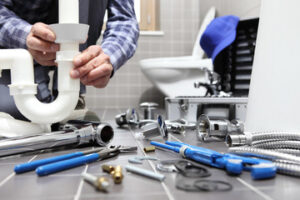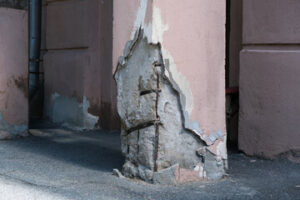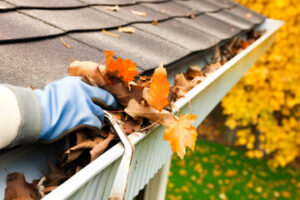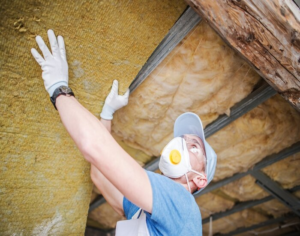Vacuuming frequently and treating stains as soon as they occur keep your carpets looking good, but there comes a time when professional cleaning is necessary. Professionals use industrial-grade cleaners that inject water and cleaning solution into the layers of your carpet, then vacuum it up in one pass.
This process saves you a huge amount of time, especially since the professionals will move your furniture before they start working. Contact Professional Carpet Cleaning El Dorado Hills CA now!

Professional carpet cleaning services remove a lot of the dirt and debris that gets trapped in your carpets. The process is far more thorough than what you can do yourself with a home vacuum cleaner or rentable machine from a store. This deep cleaning helps extend the lifespan of your carpet by removing dirt and other elements that can damage it or cause it to become worn and discolored more quickly.
Professionals use specialized equipment that brushes the carpet and then sprays it with hot water mixed with detergent. The machine then suction up the water and any debris in it, leaving the carpet clean and fresh. This process, which is also known as steam cleaning, uses a higher temperature of water than standard home machines and can actually kill bacteria in the carpet.
Another benefit of professional carpet cleaning is that it can remove stains and odors that you might not even be aware of. From pet accidents to garlic sauces, odors can get stuck in the fibers of your carpet and leave behind an unpleasant smell that can be difficult to get rid of. Professional carpet cleaners have specialized machines that can get down to the base of your carpet and pull up these odors for good.
Aside from removing stains and odors, professional carpet cleaners will often offer additional services that can improve the cleanliness of your carpet. For example, some companies will offer to move furniture for a more thorough clean or they might have the ability to reapply stain proofing to your carpet.
When selecting a company to provide these services, ask about the techniques they use for cleaning. Look for a company that offers hot-water extraction, which is the preferred method of many carpet manufacturers. This process sprays the carpet with hot water and cleaning solution, which then gets sucked up in a machine along with the dirt and other debris.
You should also ask if the company provides pre-spraying, which is necessary to ensure that the chemicals have time to work on stubborn stains. This step can make a huge difference in the effectiveness of the cleaning and how well your carpets come out of it.
Healthier Environment
The dirt, dust, and debris that gets trapped in your carpet’s fibers isn’t just unsightly; it can also be harmful to the health of your family. Having your carpets professionally cleaned regularly removes these particles and sanitizes the entire area, improving your home’s indoor air quality. This benefit is particularly important for families with allergy sufferers or anyone with respiratory issues, as clean carpets can significantly reduce these problems.
The cleaning process itself can also help to extend the life of your carpets. Regular cleanings keep them from losing their vibrant appearance and help to eliminate the buildup that can cause them to degrade over time. Additionally, professional cleaners often have the ability to move furniture and other items in order to better clean the nooks and crannies of your carpet. This prevents the need to hire a moving company or invest in renting a heavy duty vacuum cleaner, saving you even more money in the long run.
If you’re thinking about selling your home in the future, a properly maintained carpet can increase its resale value. This is because potential buyers will see it as an indication of your home’s overall care and upkeep. In addition, many professional cleaners offer moves services for a small additional fee.
Whether you’re looking to sell your home or simply enjoy having clean, beautiful floors in your space, a professional carpet cleaner is worth the investment. They have the tools and equipment needed to thoroughly clean your carpets and can do it in a fraction of the time that it would take you to perform the task at home. Additionally, they can get rid of tough stains like wine, coffee, pet urine, and ink that you may not be able to remove on your own. The regular, thorough cleanings they provide can keep your carpets looking new and fresh for years to come and save you the hassle and expense of replacing them. Plus, the improved indoor air quality will make your home a more pleasant place to live. In the end, hiring a professional is a win-win situation.
Convenience
Carpeting adds a warm and cozy touch to any room, but it can become a breeding ground for bacteria, germs, and dust mites if not cleaned regularly. The inherent fibers of carpeting act as an efficient air filter, ensnaring and preventing the dispersal of many microscopic particles that would otherwise escape standard vacuum cleaner filters. Regular professional cleanings help remove these particles, fostering healthier indoor air and extending the lifespan of your carpets.
While a professional carpet cleaner near Wheatland may seem like an unnecessary expense, the convenience they offer is hard to deny. Their expertly honed skillset allows them to tackle stubborn, deep-down stains that you could never hope to achieve on your own with the right equipment. The time and effort you’d save by hiring professionals can be spent on other more productive activities, making them a worthy investment in the long run.
Whether you’re dealing with wine or coffee stains, ink, pet urine, or other hard-to-remove contaminants, your professional cleaner will know how to handle them without damaging your carpet or floor. Depending on the stain, they may apply a pretreatment to dissolve and loosen the dirt prior to the main cleaning process, or utilize fans to speed up the drying process once the carpet is clean.
Many carpets are made of a blend of natural and synthetic fibers, some of which can be more difficult to clean than others. A professional carpet cleaner will have the knowledge and experience to properly assess your rug’s fibers and construction to determine the best methods for cleaning it. They’ll also use specialized tools to thoroughly clean the entirety of your rug, including the hard-to-reach corners and edges that are often neglected.
A professional carpet cleaner will also be able to apply protectants and extenders that will keep your rug looking its best for as long as possible. This is an extra step that many DIYers overlook, resulting in their carpets becoming dry and dull in a short amount of time. Hiring a professional will ensure that all of your rug’s protection and extender needs are met, saving you the hassle and expense of replacing it in the future.
Aesthetics
Carpets enhance the look of living spaces, adding warmth and creating a comfortable atmosphere. However, they can also collect dirt, dust, allergens and other contaminants that can diminish their visual appeal. Professional carpet cleaning services remove these unwanted particles, restoring the carpets’ original appearance.
When a business or institution maintains clean carpeting throughout its facilities, it sends a message of cleanliness and meticulous care to employees and visitors. This can contribute to a more positive work environment, fostering productivity and job satisfaction.
High-traffic areas in commercial settings like offices or hospitals generate a lot of dust and debris that can quickly build up in the carpet. This not only stains the carpet, but it can also pose health risks. Fortunately, regular professional cleaning removes this dirt and dust, preventing it from settling into the airways where it can cause respiratory problems.
In addition to improving the look of the carpet, professional cleaning also eliminates odors that can affect indoor air quality. Stubborn odors from pets, smoking and other sources can be very difficult to get rid of, but specialized cleaning products ensure that these odors will not return.
While DIY spot cleaners can help, they cannot tackle the deep-set stains that result from spills and other accidents. Using powerful equipment and specialized cleaning techniques, professionals can effectively eliminate these stains, leaving the carpets looking fresh and new.
Dirty carpeting can make a negative impression on customers and employees, especially when it is located in the lobby or reception area of a company. However, it is important to keep in mind that first impressions can have a significant impact on the success of a business. Professional carpet cleaning services remove stains and odors, helping companies to create a welcoming atmosphere that fosters productivity and a sense of professionalism.
For homeowners, prompt and thorough carpet cleaning can protect the investment in this home furnishing, extending its lifespan and retaining its original color and texture. It can also help improve indoor air quality and create a more pleasant living space for family members and guests. Professional cleaning is a convenient, cost-effective way to maintain the beauty and integrity of your carpeting.








